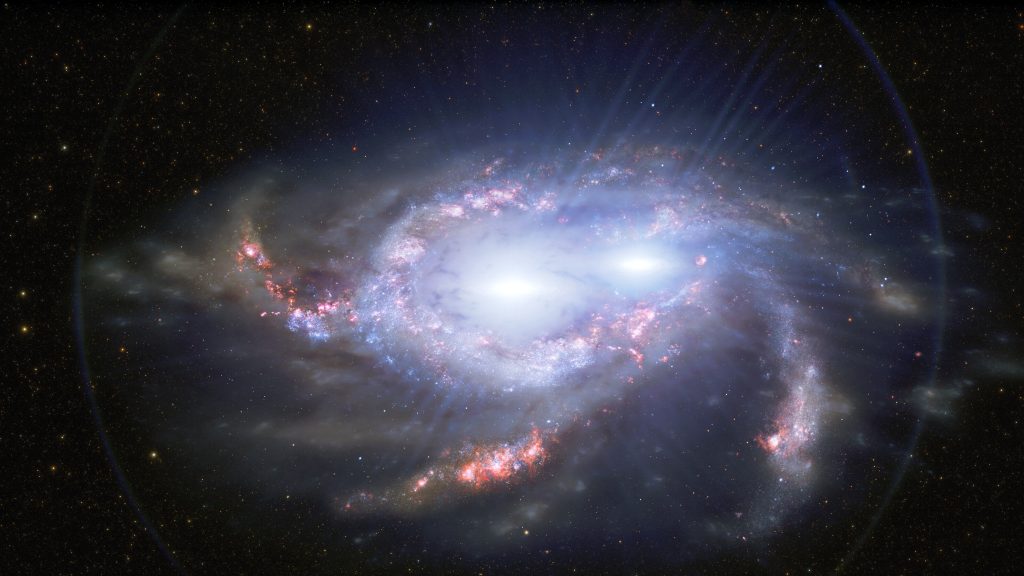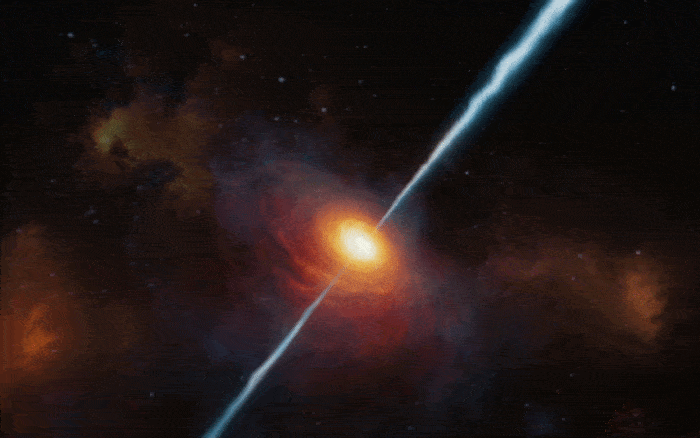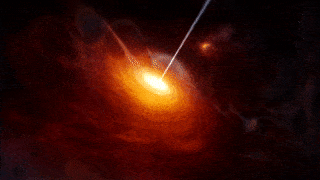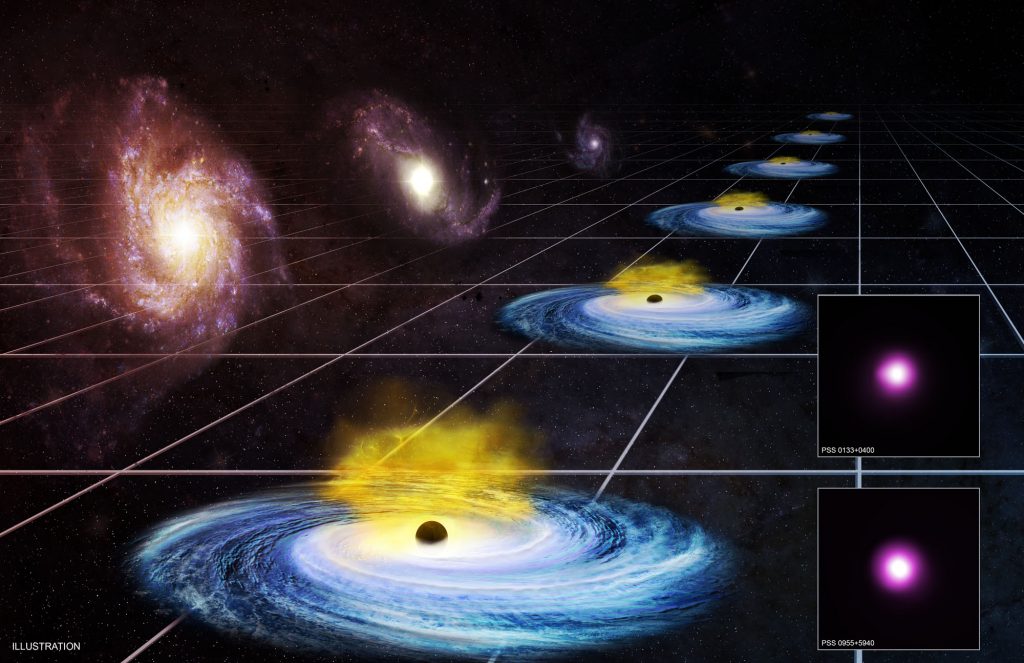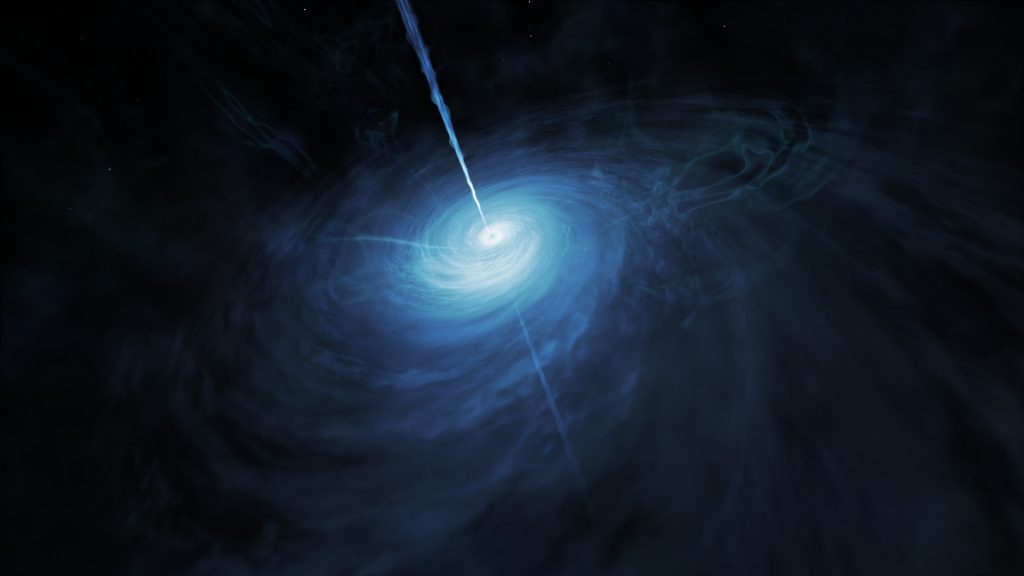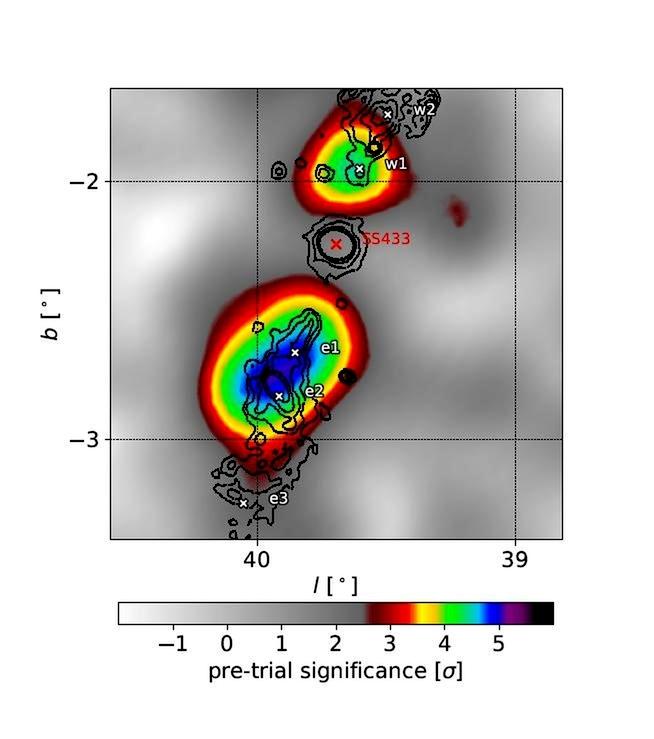Quasar
Quasar transmits from the early days of the universe
In the 1950s, astronomers discovered radio sources to which point-like, i.e. star-like objects could be assigned in the visible light range. Until then, whole galaxies had been identified as radio sources. The findings were called "quasi-stellar objects", or quasars for short. Later, however, researchers realized that quasars are embedded in galaxies after all, and in fact constitute their active nuclei radiating in many wavelength ranges. That they had been seen only as point sources was simply because they are very, very distant. In fact, they are the most distant objects in the universe that we can observe. This is…
Premature birth? The most distant quasar raises questions
Astronomers have discovered the most distant quasar yet. The monstrous celestial object called J0313-1806, which existed 670 million years after the Big Bang, shines thousands of times brighter than the Milky Way and is powered by another extreme, the earliest supermassive black hole, more than 1.6 billion times the mass of the Sun. This fully formed distant quasar with a redshift of z = 7.64, formed more than 13 billion years ago, is also the earliest quasar discovered to date, giving astronomers a glimpse of how massive galaxies formed in the early universe. Quasars, powered by the feeding orgies…
Dark energy changes over time
Dark energy is thought to be the reason why the universe continues to expand faster and faster, instead of contracting. Yet researchers still don’t have a well-founded theory on what exactly this mysterious form of energy is. If current theories of the universe are correct, dark energy must account for up to 72 percent of the total matter of the universe today. But what about in the past? Current theory assumes that dark energy had little influence early on. So, the expansion of the universe must have changed significantly over time. Now, with the help of NASA’s Chandra X-ray…
A cosmic beacon from the dawn of the universe
The Hubble Space Telescope has succeeded in imaging an especially bright quasar from the dawn of the universe. As astronomers report in a paper, J043947.08+163415.7 is 12.8 billion light-years away. That also means that we can see 12.8 billion years into the past. When the light that is reaching us today was emitted from the quasar, the universe was still in its epoch of reionization. (más…)
How do microquasars work?
Quasars are active galactic nuclei. Markarian 231, for example, consists of a pair of ultra-massive black holes that have masses of 4 and 150 million solar masses, orbiting each other at an enormous speed at a distance of 600 million light-years from our Solar System and emitting electromagnetic radiation in the whole spectrum. The brightest objects in the universe are too far away to study them in high resolution. Therefore, astronomers were excited about the discovery of microquasars. What proper quasars present at the scale of whole galaxies, microquasars mimic at the scale of a solar system. (más…)
